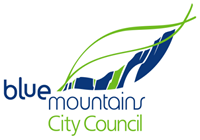Field of qualification presents the primary field of study for the highest qualification the person has received. While this is likely to have some relationship to their current occupation, this is not necessarily the case.
The presence of specific qualifications among Blue Mountains City's resident workforce, which are not used by local industry, may indicate an opportunity for a new industry to move into the area and access a ready labour force.
The field of study relates to a number of factors, such as:
- The age of the population;
- The types of industries and occupations located in Blue Mountains City or within commuting distance, and their qualification requirements;
- The availability of educational institutions with those curricula nearby;
- The socio-economic status of Blue Mountains City, and;
- The mobility of the population to move where particular skills are required.
Field of Qualification should be looked at in conjunction with Qualification and Occupations statistics for a clearer picture of the skills available in the resident worker population.
Data source
Australian Bureau of Statistics (ABS) – Census 2016 and 2021 – by usual residence
Current industry:
Current benchmark:
Sex:
| Resident workers field of qualification | |||||||||
|---|---|---|---|---|---|---|---|---|---|
| Blue Mountains City - Persons | 2021 | 2016 | Change | ||||||
| Field of qualification (Click rows to view sub-categories) | Number | % | New South Wales | Number | % | New South Wales | 2016 - 2021 | ||
| Natural and Physical Sciences | 1,023 | 2.8 | 2.3 | 907 | 2.5 | 2.1 | +116 | ||
| Information Technology | 735 | 2.0 | 3.7 | 618 | 1.7 | 3.0 | +117 | ||
| Engineering and Related Technologies | 3,323 | 9.2 | 10.0 | 3,491 | 9.7 | 10.4 | -168 | ||
| Architecture and Building | 1,646 | 4.5 | 4.3 | 1,703 | 4.7 | 4.4 | -57 | ||
| Agriculture, Environmental and Related Studies | 896 | 2.5 | 1.5 | 800 | 2.2 | 1.5 | +96 | ||
| Health | 3,306 | 9.1 | 8.0 | 3,066 | 8.5 | 7.1 | +240 | ||
| Education | 3,700 | 10.2 | 5.7 | 3,556 | 9.9 | 5.4 | +144 | ||
| Management and Commerce | 4,735 | 13.0 | 18.3 | 4,519 | 12.6 | 17.1 | +216 | ||
| Society and Culture | 4,628 | 12.8 | 9.7 | 4,109 | 11.5 | 8.8 | +519 | ||
| Creative Arts | 2,026 | 5.6 | 3.4 | 1,765 | 4.9 | 3.1 | +261 | ||
| Food, Hospitality and Personal Services | 1,097 | 3.0 | 3.2 | 1,163 | 3.2 | 3.3 | -66 | ||
| Mixed Field Programmes | 24 | 0.1 | 0.1 | 38 | 0.1 | 0.1 | -14 | ||
| Not stated or inadequately described | 886 | 2.4 | 2.8 | 918 | 2.6 | 2.7 | -32 | ||
| No qualification | 8,268 | 22.8 | 27.0 | 9,217 | 25.7 | 31.1 | -949 | ||
| Total Persons | 36,293 | 100.0 | 100.0 | 35,870 | 100.0 | 100.0 | +423 | ||
Source: Australian Bureau of Statistics, Census of Population and Housing 2016 and2021. Compiled and presented by .id (informed decisions) Please refer to specific data notes for more information | |||||||||


Dominant groups
Analysis of the field of qualifications in Blue Mountains City shows that the three largest fields the resident workers (All industries) were qualified in were:
- Management and Commerce (4,735 people or 13.0%)
- Society and Culture (4,628 people or 12.8%)
- Education (3,700 people or 10.2%)
In combination these three fields accounted for 13,063 people in total or 36.0% of the resident workers (All industries).
In comparison, New South Wales employed 18.3% in Management and Commerce; 9.7% in Society and Culture and 5.7% in Education.
The major differences between the field of qualifications held by the resident workers () of Blue Mountains City and New South Wales were:
- A smaller percentage of resident workers (All industries) qualified in Management and Commerce (13.0% compared to 18.3%)
- A larger percentage of resident workers (All industries) qualified in Education (10.2% compared to 5.7%)
- A larger percentage of resident workers (All industries) qualified in Society and Culture (12.8% compared to 9.7%)
- A larger percentage of resident workers (All industries) qualified in Creative Arts (5.6% compared to 3.4%)
Emerging groups
The number of resident workers (All industries) in Blue Mountains City increased by 423 between 2016 and 2021.
The largest change in the field of qualifications held by the resident workers (All industries) between 2016 and 2021 in Blue Mountains City was for those qualified in:
- Society and Culture (+519 resident workers)
- Creative Arts (+261 resident workers)
- Health (+240 resident workers)
- Management and Commerce (+216 resident workers)
